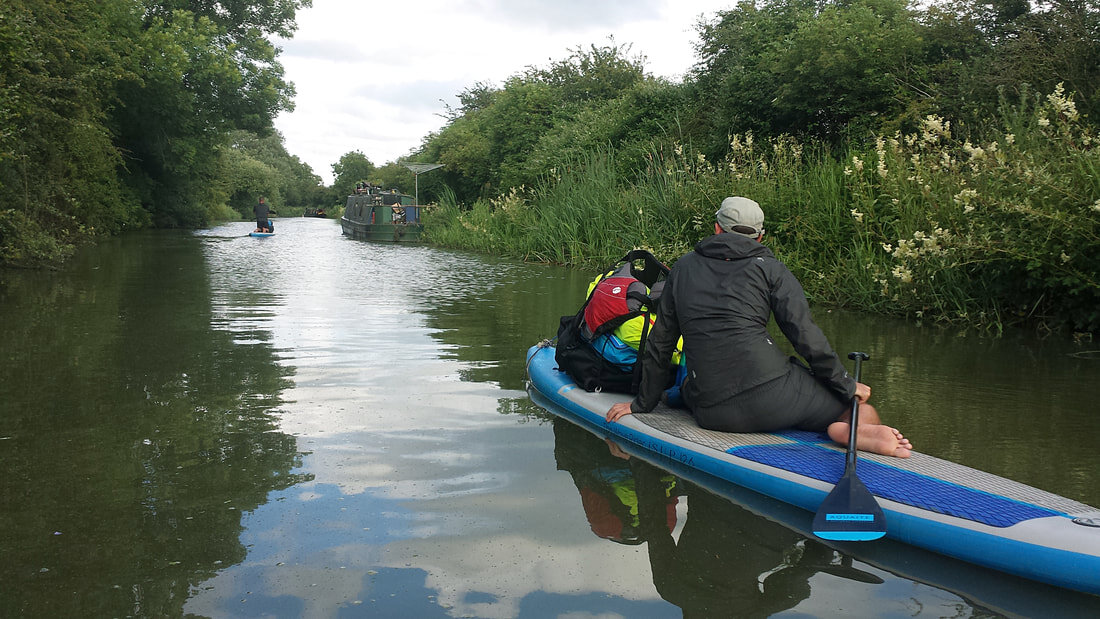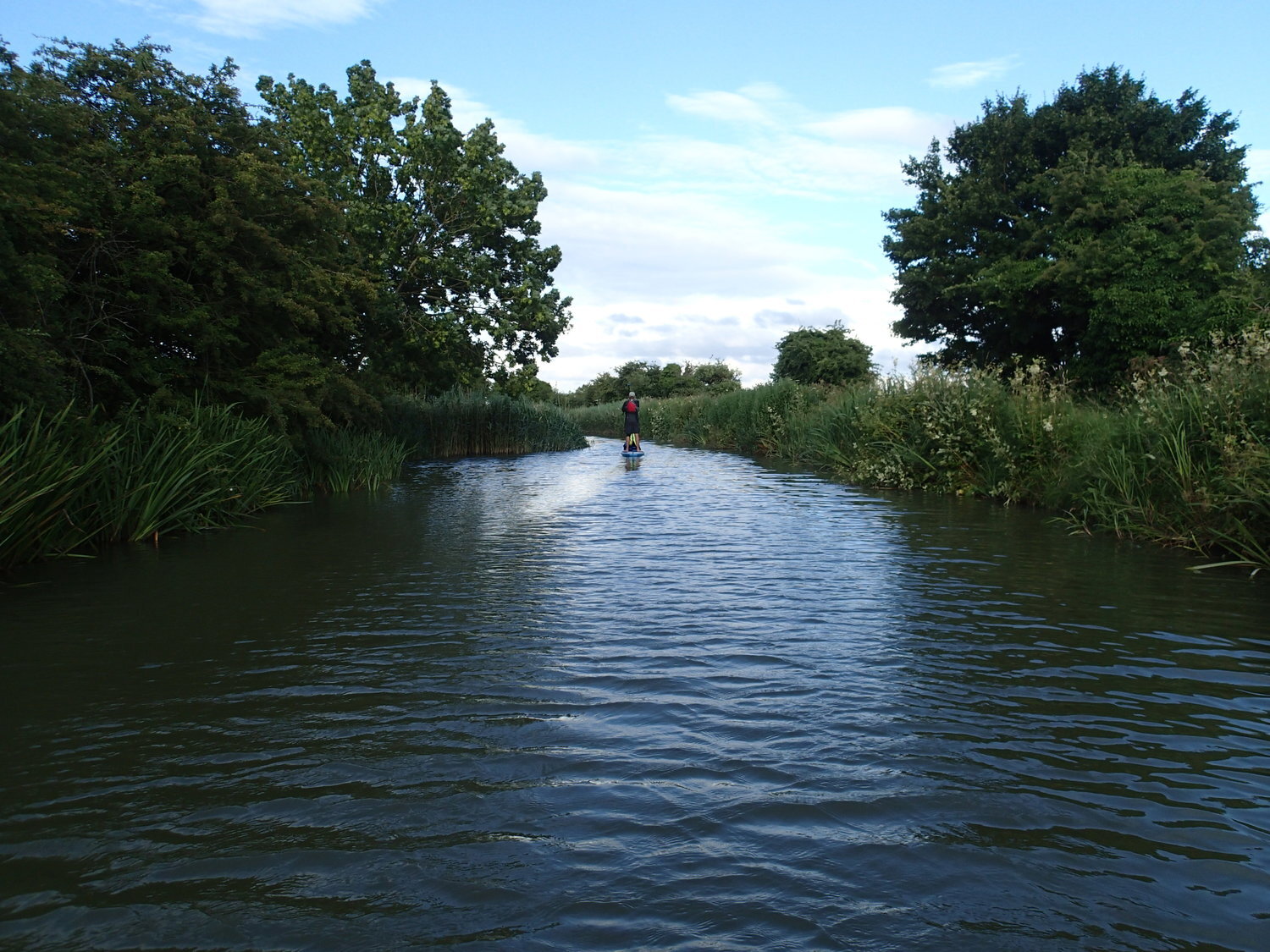LIFE IN THE SLOW LANE
Words By: Marcus Samperi Photography By: Neil Froggitt & Will Phillips
It had been a particularly cold night perched on the bank of the River Thames. We found ourselves occupying a fisherman’s hideaway, overgrown by nettles, brambles, vines and long grass; there was barely enough space for two small tents let alone four. However, we had run out of options, on this stretch of the Thames it was notoriously difficult to find any suitable land for wild camping and as we had lost the light, we had to make do. The next morning, complete with chattering teeth, the cloudless sky welcomed in the new day. As the sun broke onto the horizon it brought with it much-needed warmth, the silence only broken by the sound of the birds chirping in the distance and the jet-boil bubbling away. This was so far removed from our day-to-day lives in the bustling London metropolis that we all lived. This journey had given us so much up until this point and yet there was still 67 miles and 3 days remaining until it was complete: it couldn’t have too much more in store for us, could it?
We were attempting to cross England along the waterways connecting Bristol to London. In an age where every effort is put into moving people around a country as fast and as effortlessly as possible we are forgetting the joys of living life in the slow lane and enjoying the interaction that it can provide; whether it is connecting with nature or other people. It is currently possible to travel between these two cities, by train, in 1 hour 40 minutes and with future improvements this could potentially reduce the travel time even further, possibly even bringing Bristol into London’s commuter belt. By taking this train, what are we missing out on? Where exactly does this railway pass? And, are we in danger of letting corners of this country become forgotten by our need to get from A to B as quickly as possible? There was only one way to find out: a group of 4 of us were planning to take that same journey but instead of using the train we would instead travel by a mode of transport driven only by human power.
Over the last few years, a new sport has grown in popularity: stand up paddle boarding (SUP) and thanks to the introduction of lightweight, inflatable boards it has helped to develop a SUP touring niche capturing the imaginations of adventure seekers the world over. Standing on a paddle board gives such a unique perspective that it allows you to see an area that you thought you knew but in a completely different light. It can give you a feeling that you are exploring new and unchartered territory even if you’ve walked through or experienced that area many times before. A perfect fit with what we were planning to show: that adventure can be found in the most regular of places and still have the same awe and interest that most people think only exists by boarding a plane and travelling halfway around the world.
The journey saw us cover 157 miles starting on the River Avon and paddling, against the flow, to the Kennet and Avon Canal. We then covered the full 87 miles that took us around Bath, through the North Wessex Downs and on towards Reading. From there the canal flows into the River Thames linking it to London but not before meandering through South Oxfordshire, Berkshire and Surrey. The route had 116 locks along it, portaging was a daily chore meaning this was not just a simple paddling journey but more of an endurance challenge. It would see us delve deep into our reserves and, at times, relying on the kindness of strangers when we got into a spot of bother or needed assistance.
The biggest thing we would learn along the way was to trust each other especially when things got a little tricky.
One notable incident found us in the middle of the River Thames as the day was drawing to a close, tired and aching from the miles we had covered. The scenery that day had been particularly beautiful and picturesque. As the river meandered around its wandering path it revealed more and more lush greenery punctuated by the odd dwelling that reminded us that we were still close to civilisation, at times it was easy to forget. We had become so comfortable with our daily paddling routine that it wouldn’t be uncommon for us to be spread out across the water, close enough that we were in earshot of one another but far enough away to still enjoy a bit of alone time and personal space. On one of these occasions, it was so quiet that the only sound that I could hear was of the paddle entering and travelling through the water: a sound so hypnotic that it conjured up imagery of relaxing on a beach as the shallow waves broke onto the perfect golden sands. I was completely zoned out. All of a sudden the moment was broken by a large splash, loud enough to snap me back into reality. To begin with I thought a bird had flown overhead dropping something into the water. However, the splashes became more regular and, after a few moments, I realised that we had become target practise for a couple of youths along the towpath. They were throwing stones large enough to give an almighty splash when hitting the water but small enough that they could be thrown by hand over some distance. Thankfully, the river was quite wide and we were paddling on the opposite side from where they were. At that moment, I had never felt fear quite like it; I became instantly alert, scanning the area to locate the culprits, looking for my teammates and a place to take cover. The sound of stones splashing into the water was amplified as everything else became muffled. They felt like they were getting closer and closer, louder and louder as the seconds ticked past. It felt like time had slowed down.
At that moment we had a sudden realisation of quite how vulnerable we were out there standing on these inflatable paddle boards with no where to take cover. The worry was that if one of us was to get a blow to the head it could do some serious harm. After a short while the culprits got bored and left us alone. It was an episode that thankfully was never repeated and luckily nobody was struck. We paddled together until we found camp that evening.
That vulnerability was what made us realise that we had chosen the right mode of transport for this journey. We could have easily used a kayak, canoe or houseboat even but it wouldn’t have had the same feeling, the same affect on the people that we encountered along the way. In hindsight, if we completed the journey in a kayak or canoe we would have missed out on some stunning scenery seen only by being higher than the hedgerows and fences that lined the route. The stand up paddle board allowed us to witness and be affected more by what was around us. It also seemed to encourage more people to approach, engage and communicate with us. An opportunity for us to delve into the lives of these people, to find out more about them, and to learn how their lives differed from our own even though we lived on the same landmass. The fact that stand up paddle boarding equalled the speed of walking meant that we could continue a conversation with passer-by’s for a lot longer than any other transport. This truly was providing an opportunity to find out what was along the route that the high-speed train line passed. It also gave us an insight into how long it would have taken our ancestors to travel the distances that we now take for granted.
It had been long day, our longest distance to date, our bodies were tired, our stomachs rumbling but as the sun set in the distance it bathed us in a yellow glow calling an end to another day on the river. We were getting close to our final destination, and even closer to our homes but we weren’t ready for our journey to come to an end - not yet.









